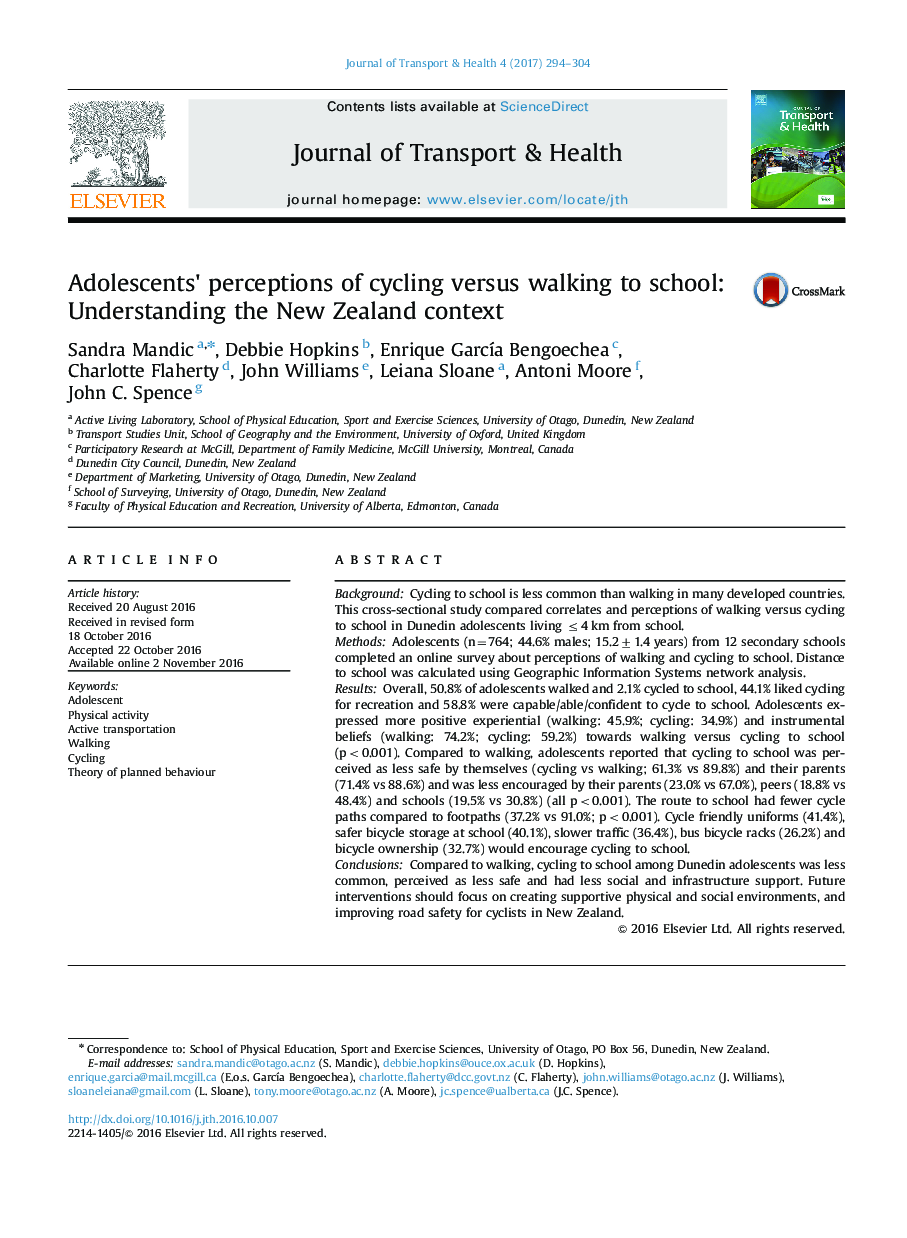| کد مقاله | کد نشریه | سال انتشار | مقاله انگلیسی | نسخه تمام متن |
|---|---|---|---|---|
| 5117882 | 1485457 | 2017 | 11 صفحه PDF | دانلود رایگان |
- Low rates of cycling to school in New Zealand adolescents may be context-specific.
- Compared to walking, cycling to school was less common and perceived as less safe.
- Cycling also received less social and infrastructure support.
- More supportive physical and social environments are needed for promoting cycling.
BackgroundCycling to school is less common than walking in many developed countries. This cross-sectional study compared correlates and perceptions of walking versus cycling to school in Dunedin adolescents living â¤4 km from school.MethodsAdolescents (n=764; 44.6% males; 15.2±1.4 years) from 12 secondary schools completed an online survey about perceptions of walking and cycling to school. Distance to school was calculated using Geographic Information Systems network analysis.ResultsOverall, 50.8% of adolescents walked and 2.1% cycled to school, 44.1% liked cycling for recreation and 58.8% were capable/able/confident to cycle to school. Adolescents expressed more positive experiential (walking: 45.9%; cycling: 34.9%) and instrumental beliefs (walking: 74.2%; cycling: 59.2%) towards walking versus cycling to school (p<0.001). Compared to walking, adolescents reported that cycling to school was perceived as less safe by themselves (cycling vs walking; 61.3% vs 89.8%) and their parents (71.4% vs 88.6%) and was less encouraged by their parents (23.0% vs 67.0%), peers (18.8% vs 48.4%) and schools (19.5% vs 30.8%) (all p<0.001). The route to school had fewer cycle paths compared to footpaths (37.2% vs 91.0%; p<0.001). Cycle friendly uniforms (41.4%), safer bicycle storage at school (40.1%), slower traffic (36.4%), bus bicycle racks (26.2%) and bicycle ownership (32.7%) would encourage cycling to school.ConclusionsCompared to walking, cycling to school among Dunedin adolescents was less common, perceived as less safe and had less social and infrastructure support. Future interventions should focus on creating supportive physical and social environments, and improving road safety for cyclists in New Zealand.
Journal: Journal of Transport & Health - Volume 4, March 2017, Pages 294-304
